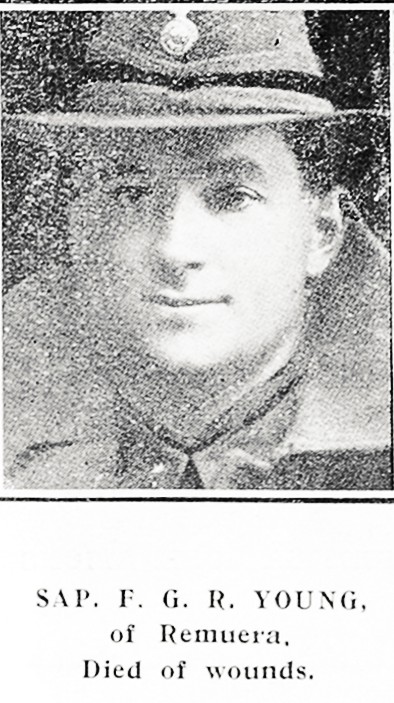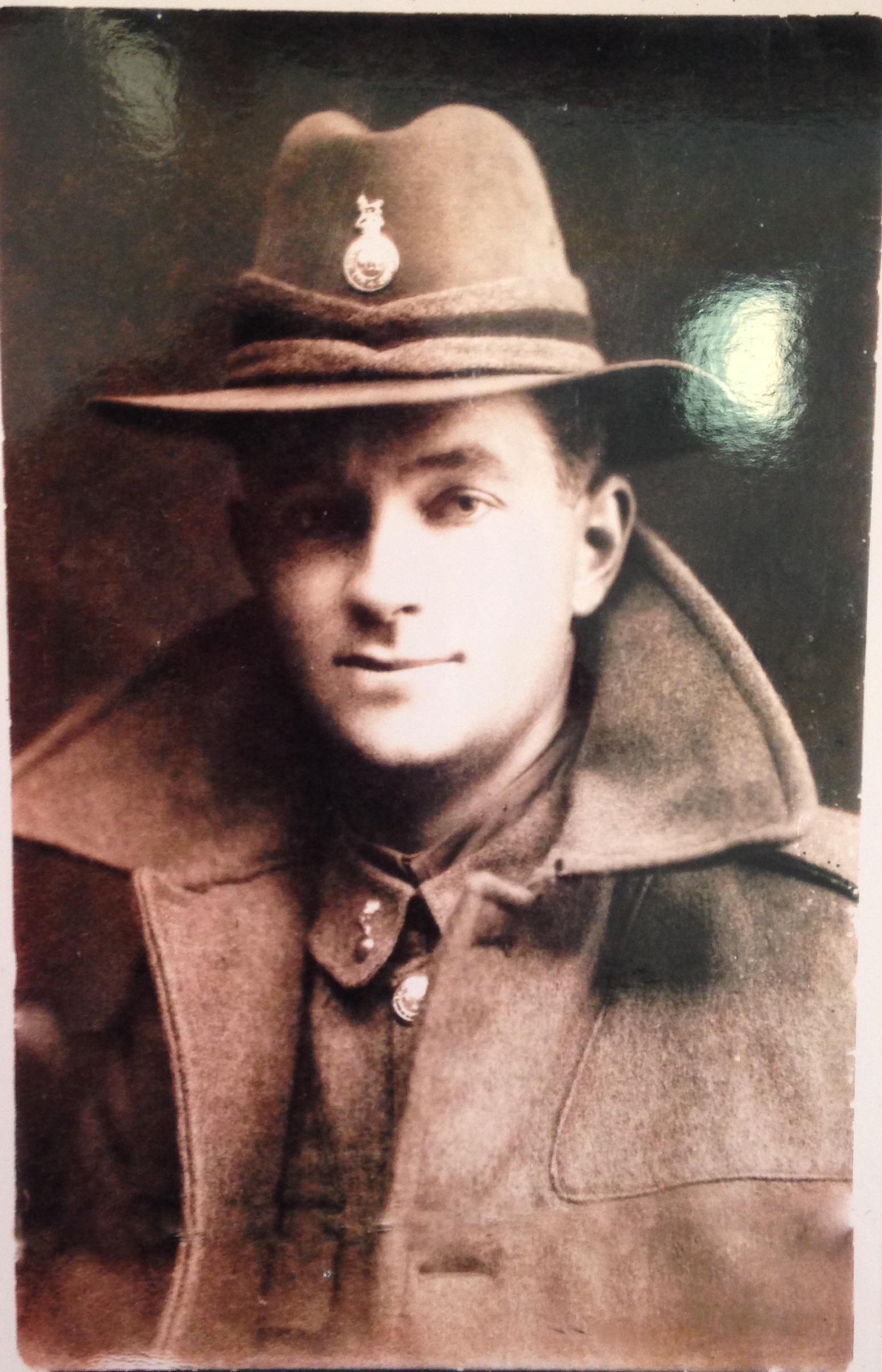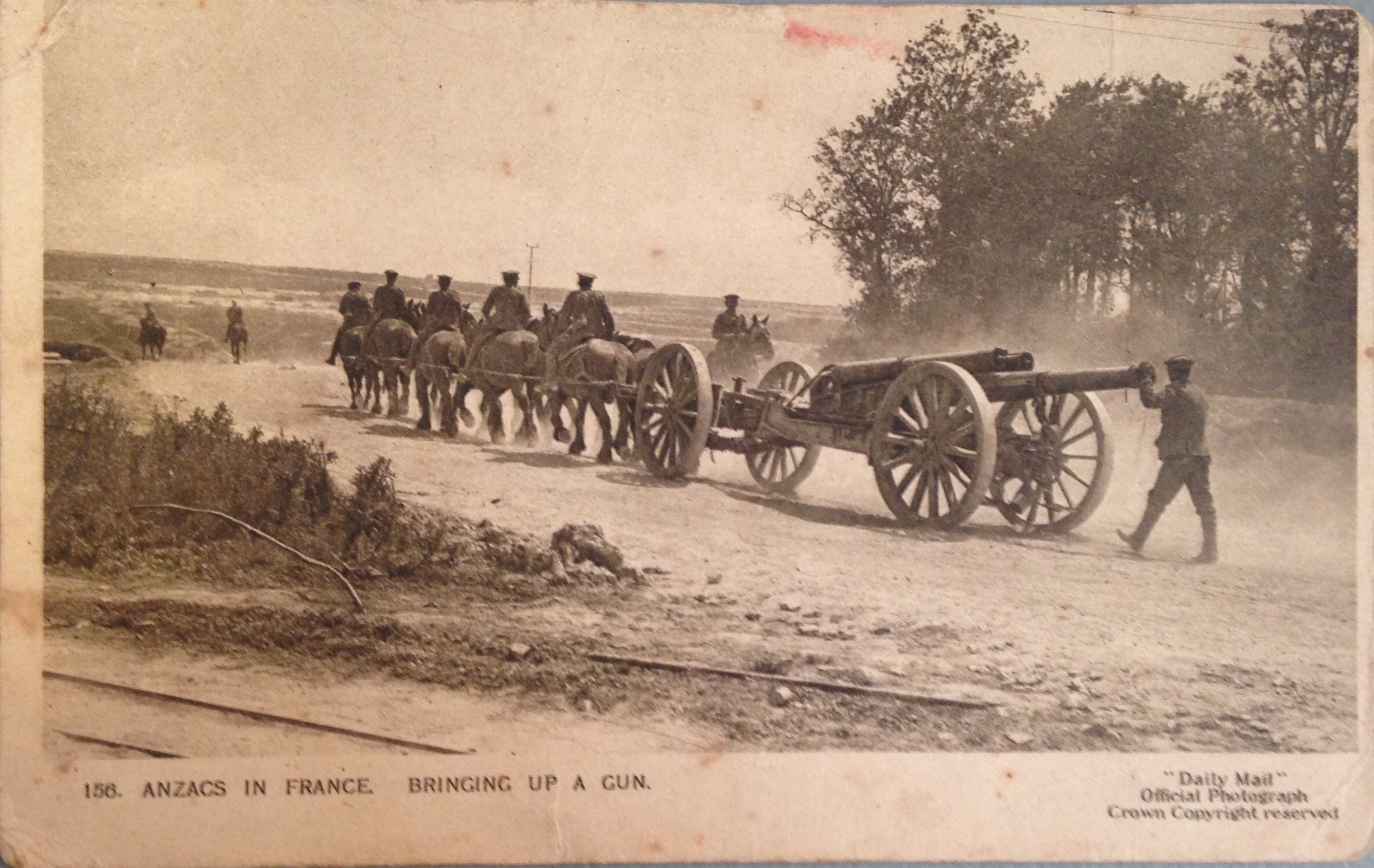WW1 Young Brothers
Frank Gladstone Rameka Young (46423) was born on 28 June 1886, the fifth son of the Reverend Henry Young (1835 – 1925) and Mary Ann Young (1846 – 1908), of “Glenhaven”, 52 Brighton (now Bassett) Road, Remuera, Auckland, New Zealand.
Reverend Henry Young, a Congregational Church minister and his wife had arrived from England in 1882 and both were for twenty years teaching Maoris in the Auckland Province, before moving to Remuera in 1907. [1, 2]
Frank attended Prince Albert College, in Upper Queen Street, Auckland. In 1902 Frank was apprenticed to Mr Austin, as a Railway Carriage Builder in Wanganui (now Whanganui). Frank transferred with Mr Austin to New Zealand Railways in Newmarket, Auckland, and oversaw repairs to all express trains from 1914 to his enlistment in 1917 when he was granted leave of absence to enlist. [3]
Frank was a member of Beresford Street Congregational Church, the Choir, and a member of the temperance movement. Temperance societies and campaigners were a major force in many western (especially Protestant) countries at the time, where alcohol was seen as the enemy of the settled and respectable parts of society [4, 5]
Frank’s brother, Alec (Alexander) Percy Young (20902) had enlisted earlier, on 2 May 1916. Frank entered Trentham Military Camp on 6 February 1917. Before he was sent overseas, Frank married Winifred (Winnie) Bertha Reed in April 1917. On 12 June 1917, he sailed for Plymouth, England arriving on 15 August 1917 on the vessel ‘Maunganui’ as a Sapper, an engineer building fortifications and trenches, with the 26th Reinforcements (Second Draft), New Zealand Field Engineers, New Zealand Expeditionary Force.
He was sent to the Western Front in the north of France, near Polderhoek, where its capture was important for the defence of the area particularly the Chateau which was a German stronghold. The Chateau was separated from the New Zealand lines by a creek that was a quagmire. The line had been pushed forward slightly, but the Chateau remained out of reach. About 80 soldiers lost their lives, and hundreds were wounded. Frank was wounded in action, admitted to No 2 Canadian Casualty Clearing Station, and died of his wounds on 5th December 1917 aged 31. [6]
According to Frank’s father, he “was fatally wounded by a German shell on December 5th [1917], and passed away, like a baby falling asleep, at 4 p.m. on December 8th, in his prime, a life voluntarily sacrificed, in the cause of Right and Peace.” Rev Young continues: “One of his comrades made an oaken cross, another cut out a metal nameplate, while all the section walked two miles to attend his funeral, and his Lieutenant bore emphatic testimony in writing to his widow, to his high Christian character.” [7]
Frank was awarded the British War Medal (1914-1920) and the Victory Medal.
Obituaries were published by his father, in the New Zealand Herald and the Railway Workers Obituaries in New Zealand History Online Railway Workers Obituaries [8,9]
Frank Gladstone Rameka Young (46423) is buried at (Lijssenthoek Military Cemetery, Poperinge, West-Vlaanderen, Belgium, XXVII. D. 12.
He remembered on the following memorials:
Auckland War Memorial Museum, World War 1 Hall of Memories
Railways Roll of Honour board. Wellington Railway Station, Pipitea, Wellington
Otahuhu Railway Workshops War Memorial, corner of Piki Thompson Way, Otahuhu Auckland

Alexander Percy Young. (HMNZT 65-Pakeha journal of the 17th Reinforcem.M.N.Z. Transport 65 S.S.Pakeha. Pilling, E.G. editor. McGhie, J.G. editor. Bell, R.B. editor. At sea -Officers and men)
Alexander Percy Young (20902)
Alexander (Alec) Percy Young (20902) was born on 29 February 1892. In 1908, he passed the Government Civil Service Examinations. At his enlistment on 3 May 1916, aged 23, Alec was an Engineer with the Dilworth Trust Board in Papatoetoe [1, 2]
The Dilworth Trust Board manages a diversified portfolio of investments, from the original endowment of £100,000 in land and funds left in James Dilworth’s Will in 1894. All the revenue generated goes towards funding the operations of Dilworth School, which provides scholarships to boys from good families experiencing personal or financial hardship.[3]
Alec sailed on the vessel ‘Pakeha’ as a Sapper, like his brother Frank, to make use of his engineering skills. Alec joined the 17th Reinforcements, New Zealand Field Engineers, New Zealand Expeditionary Force, arriving in Devonport, England on 19 November 1916.
The Sappers or engineers were the army’s skilled tradesmen, maintaining communications, railways, roads, water supply, bridges, and transport, as well as building fortifications and maintaining weapons. Their overall aim was to assist the movement of friendly forces and obstruct the movement of enemy forces. [4]
Alec was stationed at Sling, England and then transferred to the Western Front, France near Rouen. After the war, Alec returned to New Zealand on 19 May 1919 on the ‘Ruahine’. In 1923, he married Mabel Laurie Bingham (1889 – 1956). Alec died in 1982.


